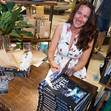Zena Shapter's Blog, page 11
June 3, 2019
Are You Afraid of Technology?

According to Business Insider, thousands of Swedish people recently embedded grain-sized microchips under their skin to replace ID cards. Following the trend of wearable technology and interconnected devices like watches and rings, the idea is to make people’s daily lives easier – users can waft a hand over a machine to unlock doors, pay for services, even travel by train. Sounds convenient, and fun – like being Darth Vader!
Possible
downsides of course include a risk of infection, the body reacting to the
device, hacking and unauthorised surveillance – although users claim not to be
concerned because the data collected and shared is “too limited”. Bionyfiken
founder Hannes Sjöblad told Tech Insider in 2015 that, “all of the wearables we
wear today will be implantable in five to ten years”. Are we excited or
concerned about this?

Anyone who’s
read M.T. Anderson’s near-future dystopian novel ‘Feed’ might be concerned. I
read the book recently while tutoring one of my high school students HSC
English, and loved it – especially its opening line: “We went to the moon to have fun, but
the moon turned out to completely suck.” With a satirical humour, the book deals with issues like consumerism,
technology, environmental decay and data mining. In particular, characters have
a ‘feed’ implanted in their brains to give them constant access to the internet
and social media. Needless to say, things don’t go smoothly!
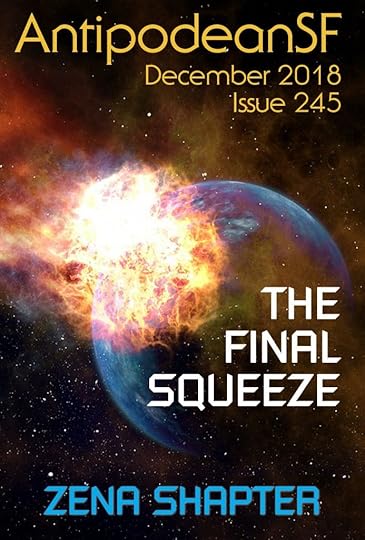
But it’s
okay for things not to go well in fiction, where we have the opportunity to safely
explore possible consequences of the way we live and the technology/science we
develop to improve our lives. I love writing science fiction for that very
reason. What if machines
become sentient? Would human clones have human rights? What if we could live
for centuries, erase or alter our memories, or tamper with our DNA? What if we
reintroduced dinosaurs into our ecosystem?
As Jeff
Goldblum’s character Ian Malcolm says in ‘Jurassic Park’, “Your scientists were
so preoccupied with whether or not they could, they didn’t stop to think if
they should.”
Countless
books and movies offer different perspectives on this, exploring the
consequences of scientific or technological ‘progress’, questioning whether
it’s progress at all. Take for example:
The MatrixTerminatorTranscendence Minority ReportEx MachinaAI Artificial Intelligence I, RobotWestworldThe Net19842001: A Space OdysseyTotal Recall Black MirrorFrankenstein The IslandPlanet of the ApesThe Man in the White SuitInception
Eternal Sunshine of the Spotless MindHerBlade Runner WALL-EGatticaThe MartianArrivalNever Let Me GoAltered CarbonEnder’s Game Jurassic ParkI Am LegendThe War of the Worlds Frankenstein The Time Machine Brave New World Nineteen Eighty-Four

And there are so many other stories – there are an easy 100 science fiction books listed over here – stories that resonate with us because of the terrible scientific or technological doom they forewarn us to avoid, stories that help us understand where we are and where we’re going, stories that also offer hope…
In fact, stories might be the very things to save us, because it’s through exploring concepts and dangers in the safety of story that we might predict dangers to avoid, and act accordingly.

A friend recently told me the story of how his car keys stopped working down the beach one day, due to saltwater getting into the batteries; it meant he couldn’t start his car. Did you know you can insert the key fob into a slot in the dashboard of those types of car to start the engine regardless of whether the key’s working or not? His story might save me from being stranded if I’m ever in the same situation!
Another
friend recently told me the story of how she dropped her smartphone into water,
but because she buried it in rice and the rice absorbed the water, it continued
functioning. That story might save my own phone if I ever do the same.
What about electric car windows? In the movies, passengers trapped inside cars sinking slowly underwater can never buzz their windows down, and there are no longer handles to wind them up or down manually. So if you’re ever in a car heading into water, buzz the windows down in mid-flight! Now there’s a story that might literally save your life!
Stories can
save us!
So when friends talk about the dangers of unrestrained technological innovation, of creating AIs (Artificial Intelligence) that understand us better than we understand ourselves (and might use that against us), or of ‘singularity’ – the point at which machines become so powerful no one can predict the future – I turn to stories for reassurance.
It’s harder jogging with a bulky Walkman
for music, rather than a smartphone. I couldn’t operate my mobile office
without the internet. I love stuffing clothes in my washing machine, pressing ‘start’,
then walking away. So technology definitely plays a substantial role in my
life. But am I concerned? Not while I have stories to guide me.
How about you?
May 22, 2019
A Poem for the Trees – saving nature with art
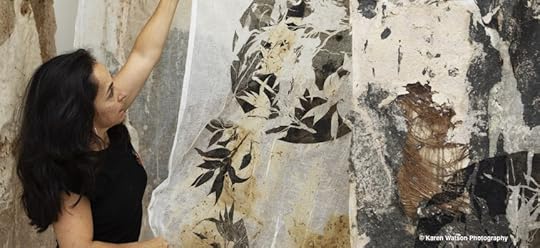 Gloria Florez
Gloria FlorezLast week, I had the pleasure of working with local artist-in-residence and forest ambassador Gloria Florez. As part of her six-month artist residency at the Eramboo Artist Environment, sponsored by Northern Beaches Council, she’s been using sustainable printmaking methods and unique handmade paper techniques to create an artist book and collage installation that celebrates the ephemeral beauty of the Pittwater Spotted Gum Forest, a local but endangered ecological community likely to become extinct. Her exhibition, opening on 15 June, features an artistic and environmental collaboration between children from Cromer Public School After School Care, video installation artist Alyson Bell… and me!
The Pittwater Spotted Gum forest is formed by 44 plant species. It shelters an extensive array of birds, marsupials and insects, and is made up of both coastal dry and coastal moist spotted gum forest. Associated trees include grey ironbark, grey gum, bangalay, smooth-barked apple, red bloodwood, broad-leaved white mahogany, turpentine and rough-barked apple. I love trees! Nature grounds me, as I mentioned here on my blog earlier this year.
So it was disappointing to learn that the NSW Threatened Species Scientific Committee has determined that the Pittwater Spotted Gum Forest is likely to become extinct in New South Wales, unless factors threatening its survival are addressed. Factors include clearing land for housing, fire mitigation and rapid weed invasion (especially Lantana Camara and Acacia Saligna). As artists, one of the things Gloria, Alyson and I can do, however, is raise awareness and tell the story of this fragile habitat and the close symbiotic relationships within it. Gloria’s artwork expresses this fragility, and the beauty of interconnectivity, and my task was to inspire a group of children to write a poem about their understanding of this.
To do this, I engaged them with creative strategies to think beyond their immediate environment to envisage experiences in the Pittwater Spotted Gum Forest, using familiarity and empathy to develop a personal literary response to its ecological story. Together we explored and developed the power of imagination, words and self-expression. They loved it! And apparently I’m hilarious! Here are some photos of our session, and the glorious children who participated:
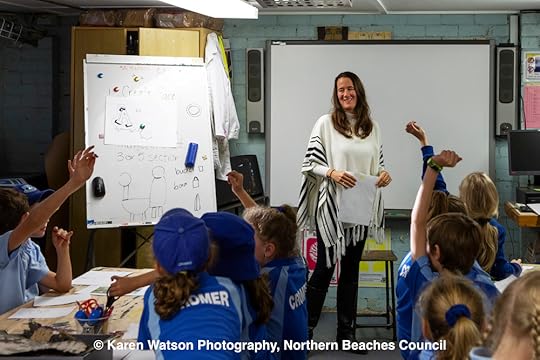
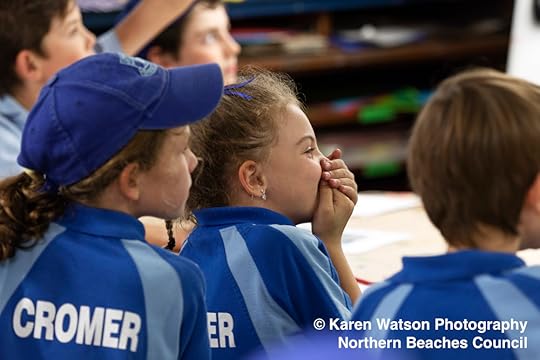
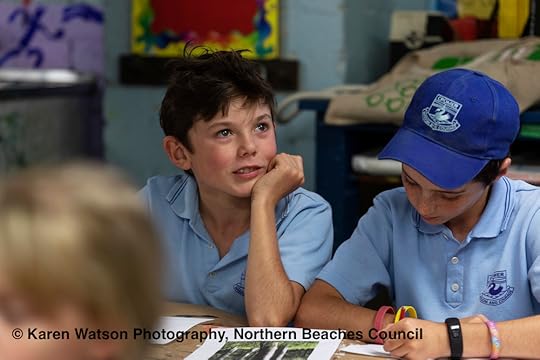
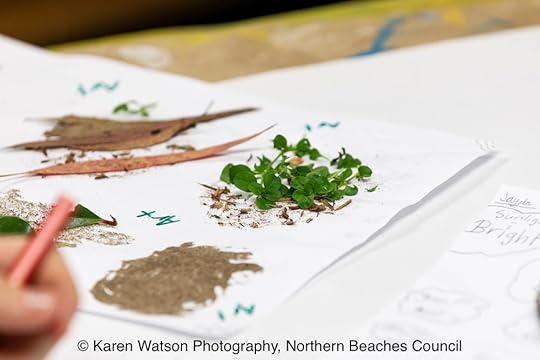
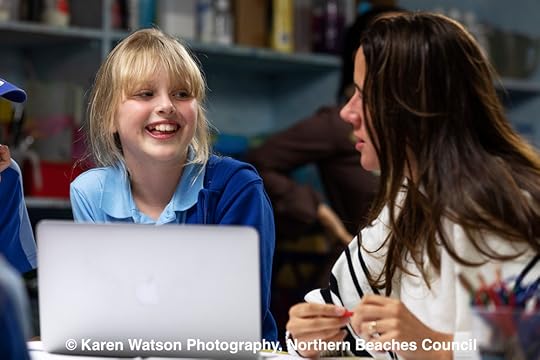

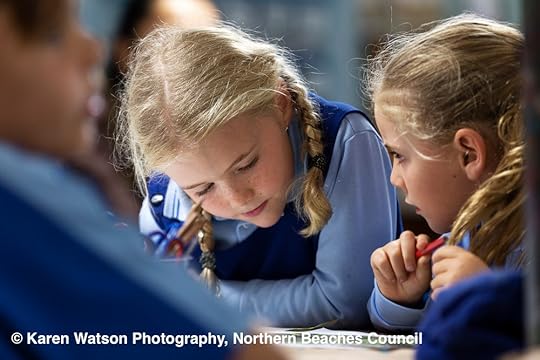
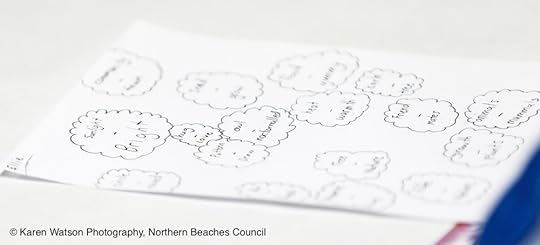
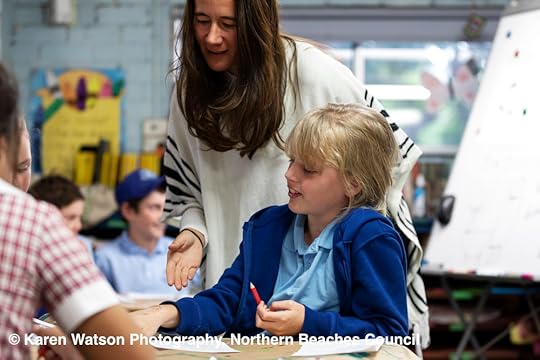
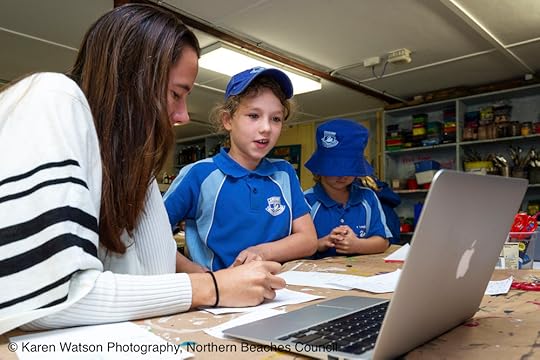
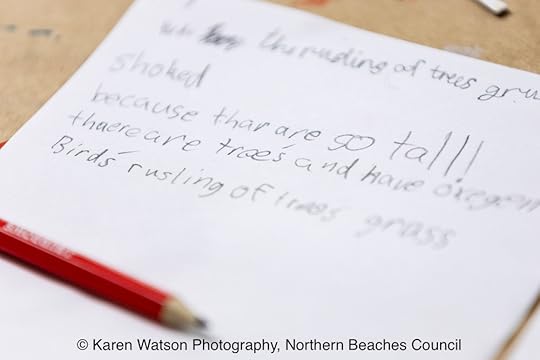
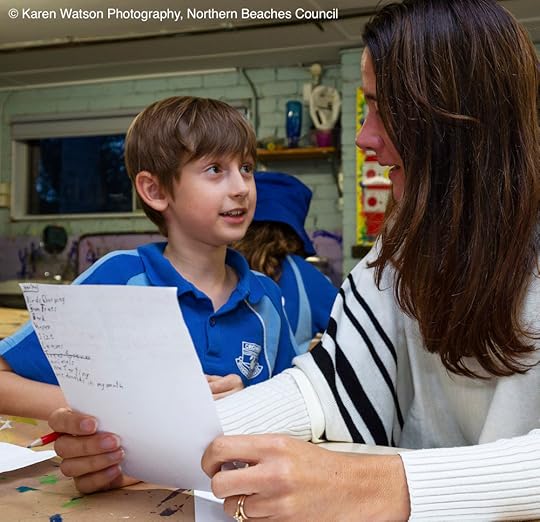
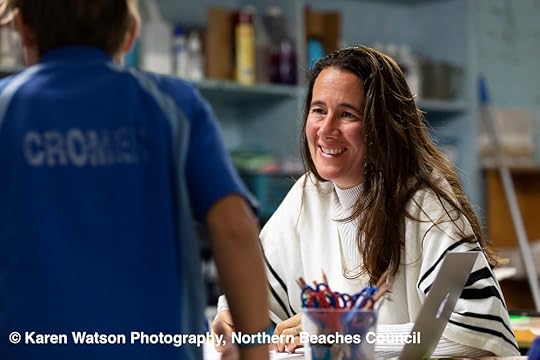
With children ranging in
diversity, age and skill (from Year 1 to Year 5), it was amazing to see how
quickly they formed a communal response and, using collectively selected words,
moulded their expression together into this poem:
Leaves fall on the brown dirt, animals crawl among it,
Flaky trunks and warm clouds,
Breathe freely,
Sunlight shines over wise trees,
Calming breeze flows through the leaves,
Earth, roots, connecting together,
Relaxing greenery, the way to life.
Nature is as peaceful as can be.
If you’d like to learn more about the project, and see how the poem gets incorporated into the exhibition, here’s a link to the upcoming exhibition’s details. When it comes to protecting and celebrating the beauty of nature, we can all make a difference.
May 15, 2019
Free Story (because it’s my birthday!) – ‘A Witch’s Place’

It’s my birthday today, so here’s a present for you – I’m over on AntipodeanSF again this month, in their bumper edition to celebrate the magazine’s 250th issue, and 21 years of AntipodeanSF, with my short story ‘A Witch’s Place‘.
Here’s the beginning:
‘The fire is beautiful!’ Aunt Joan shouts as our blacksmith and thatcher march her to the stake. Her brown woollen skirts swish as confidently as her stride. Her breath clouds in the morning air. ‘The fire is bright! We welcome it!’
I turn away with a sob.
The devil really does have her soul.
Folk pass me carrying bundles of old thatch. They stink of musty roofs and mice dung.
‘Your mother is waiting, Maggie!’ Aunt Joan calls to me. ‘It’s time! Look!’
Read the rest of my story for free over here!
While you’re there, have a read of some other stories too – this 250th issue boosts over 50 stories from some of the most familiar names in the Australian SF scene! And congratulations AntipodeanSF for 21 years online with 250 issues! The creativity in those issues is astounding, and the work and dedication it must have taken to put them together almost incomprehensible. You’ve done such a great job, Nuke, contributing so extensively to the Australian speculative landscape. I’m honoured to know you :0)
April 7, 2019
The Process of Judging Art & Words

Over the last few weeks, I’ve had the absolute honour to judge the inaugural ‘Art & Words Project’. You can read more about how I instigated the project with my local council over here. Congratulations to all the entrants who made it into the top twelve artists and top twelve writers! I was so impressed with the entries, as was Katherine, the curator of Manly Art Gallery & Museum, who took the lead in judging the visual artists.
When I was judging the written entries, I was so impressed by the high standard, I started to wonder how I’d pick only twelve! So if you got in, really well done as you had tough competition. Entries included all kinds of stories and poems related to the ‘saltwater’ theme, including tales of swimming and drowning, snorkelling and starfish, global warming and deportation, indigenous communities and art, floods, tsunamis, heatwaves, snakes, crocodiles, whales, religion, domestic violence, sunrises, disability, miscarriage, multiculturalism, and even a floating corpse! Most entries were set on Sydney’s Northern Beaches, but settings also included India, Ibiza, Townsville, Queensland and the Central Coast.
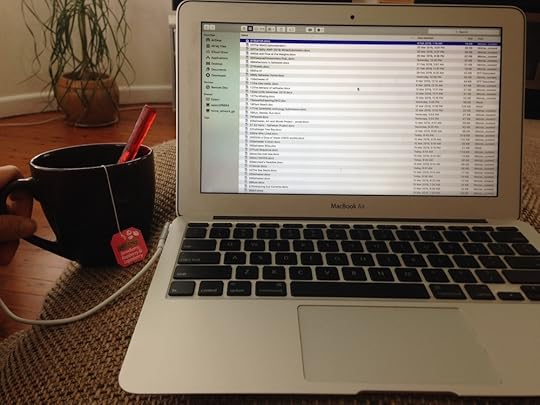
Whatever the subject or setting, saltwater formed an integral part of characters’ lives, reflecting the vital role saltwater plays for those living near the beach – it inspires us, provides us with rejuvenation and renewal, even protection, it’s part of our everyday routines, we use it for self-reflection and escape. There were many communal experiences of scorching hot sand, refreshing ocean, seagulls, waves and memories of going to the beach as a child. There were many wonderful ideas, well-written passages, and unique reflections.
There were also issues that let entries down, so I thought I’d share them as tips to help writers for another time:
Formatting – there’s no need to capitalise common nouns, or use commas when there’s no natural pause in syntax rhythm. Dialogue punctuation should be included inside quote marks. No double-spacing is needed between sentences in creative writing.Theme – there’s little point simply adding the word ‘saltwater’ to an entry that otherwise has only tenuous connections to the theme. However well-written, it still has to compete with entries written specifically for the theme, which are therefore more suited to the anthology.Style – while a journalistic or blogging style can certainly tell a story, it can also distance reader from character, preventing connection with the character’s story. Connection is key, as it’s only through connecting with a character that readers care about their journey.Low stakes – the most interesting poems looked beyond inspired imagery to reveal contemplative revelations or meaning, and the most interesting stories featured characters with personal stakes to win and lose. A single experience, abstract experimentation of words, or recollection of memories alone might not be enough when competing against personas with detailed backstory, wounds and wants, long-term needs and goals risked to affect entire lives. Title – titles provide an unmissable opportunity to comment on a creative work as a whole. If suggestive of a meaning not present in the work, however, they can also confuse a reader and therefore diminish a story’s impact. The best titles were foreshadowed in the text, reflective, and creative.
Similarly to the written entries, the visual artist portfolios were both amazing and had some common flaws. However, since I’m no visual art expert, I’d best not offer any advice! Entries included oil and watercolour painting, line drawing, pen work, illustration, textile work, photography, video installation, mixed media, etching, recycled work, glass work, weaving, printmaking, montage, and more! We determined a shortlist of skill and flair, then matched artist to story according to style and interest. The next step is for the selected artists to create a visual response to the selected written entries, and I can’t wait to see what they produce! It’s so exciting to think that this has all come from an idea I had to celebrate community creativity!
The next step for me is to edit the selected written entries, which shouldn’t take long – they’re all so polished!
Thank you to the 80+ entrants for your time and consideration. I know how long it takes to put an entry together, and I’m so sorry that we couldn’t include everyone. The list of selected writers and artists is over here.
The resulting anthology will be launched this September at the peninsula’s art festival, with selected artworks displayed at Northern Beaches Libraries, as well as on the 24-hour digital display screen at Manly Art Gallery & Museum during the festival. I’ll let you know how it all goes!
February 28, 2019
About Being A Book Layout Designer

Today I’m over at S J Morgan’s blog talking about being a book layout designer. I worked on the internal layout for Sue’s latest release, Heaven Sent (MidnightSun Publishing, 2018), and she was fascinated to learn I was also a writer. So she asked me:
How I went from being ‘writer’ to ‘designer’ – what’s been my career path? About the process and what skills you need to be a good designer.How different is it, working on your own manuscript, to working on someone else’s.How I divide my time between my various roles and do I find it’s difficult working to competing deadlines? Do I describe myself as a writer or do some of my other skills take priority in a professional sense?And much more!
Gosh, how did I get into all this and how do I manage my time?! Read my answers over on Sue’s blog here!
February 10, 2019
How To Increase Your Community’s Creativity
Last week, I was at the Glen Street Theatre talking on a panel discussing community art and creativity. I was joined by fellow passionate community creatives: public artist Greg Stonehouse, architect and illustrator Miguel Gonzalez, and Aboriginal art advocate Aunty Clair Jackson. Our task was to read and comment on our local council’s draft ‘Arts & Creativity Strategy’, which outlines changes our council wants to make to increase our community’s participation in art and creativity, to improve everyone’s wellbeing.
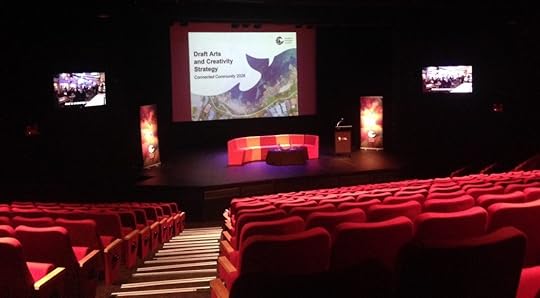
“There is a wealth of empirical evidence,” the draft strategy explains, “that shows the strong contributions the arts can make to society – positively contributing to community cohesion, health and wellbeing, education, economy and protecting our natural environment.”
More people participating in art and creativity? Count me in!
I actually wasn’t at my best on the panel because I had a cold(!), but I did what I could to comment on the council’s three main strategy outcomes – better places and spaces, diverse programs and activations, and active participation and engagement. I talked about the spaces in which writers generally work, the places we seek in order to congregate, some of the programs we need in order to showcase and support our talent, and what would enable us to more easily reach into our communities to connect with others and boost the local economy. My fellow panelists commented on the strategy from their perspectives also.
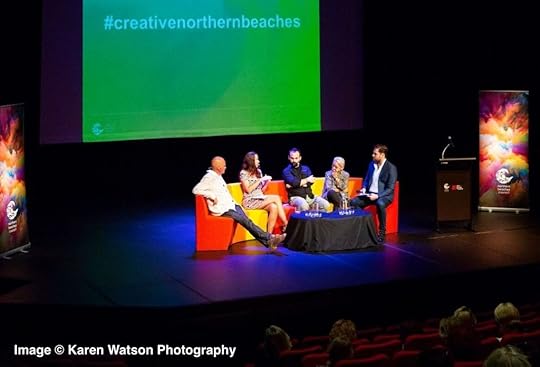
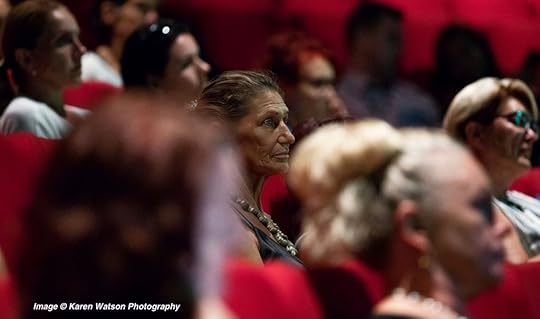
With limited time available, I didn’t get to share all my experiences and ideas, but I will! The council has a feedback form for anyone and everyone to make suggestions. As Mayor Michael Regan said at the beginning of the night, unless the council hears from the community, how can it know what the community wants?
For example, when I first immigrated to Australia in 2001 and commenced my writing journey here, I struggled for many years to find the resources I needed to progress. Access, attitudes and proximity all formed challenges to my participation. Isolation, both physical and financial, led me to founding the Northern Beaches Writers’ Group, which I created with several founding principals based on my community experiences. It had to:
focus on critiquing (because all writers need constructive feedback),be inclusive to a diverse range of people (because diversity is key to success), andbe free (because most writers don’t earn much from their art).
I’ve run it with those same founding principals now for almost ten years, one Saturday every month, completely voluntarily, rain or shine (apart from once when I visited my dying father in England!). I’ve had over 125 writers come through the group and I’d like to think I’ve made some small difference to all of them.

Writing has always
made a difference to my life. When I was a teenager, writing poetry and sharing
it with others was my mechanism of choice to cope with the stresses of entering
adulthood. Other classmates found their tribe through sport, music, visual arts
or drama. We’re all different, which is why we need easy access to anything and
everything our community can offer, whether it’s walking for free along beautiful
coastline paths, kicking a ball with mates in the local park, or enjoying easy
access to art and creativity.
“We are renewing and rethinking our planning,” Mayor Regan says in the strategy, “across all areas of Council – strategic land use, urban renewal and economic, social and environmental planning.”
Other councils may be doing the same, and they’re not mindreaders – they won’t know our experiences of community unless we tell them. So I’m going to offer my council my top seven ideas for improving access to art and creativity, and I urge you to do the same – all councils have email addresses! Let’s help our communities get more creative, and grow into healthier, happier places!
Indeed, feel free to offer your council any of the following ideas. They’re geared towards literacy, because that’s my thing, but some should also apply to other creative arts. One proviso: some ideas might not be any good in practice, but I share them in the hope that even a rubbish one might spark the best idea in someone else!
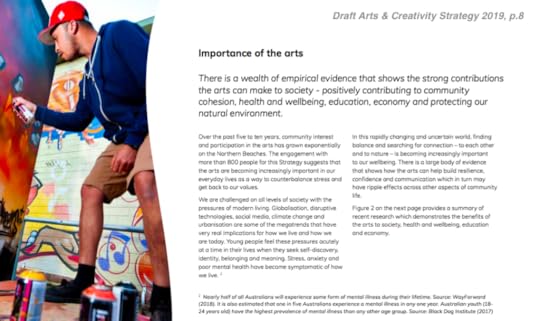
1. An inclusive, diverse, vibrant, local writers’ centre
This could be part of a larger ‘arts centre’ or a writer’s centre by itself. It could offer writers a permanent space in which to congregate, share ideas, inspiration, experience, knowledge and industry insights, network and offer each other support. Writing is collaborative and laptops don’t work well in the rain! It would be inclusive, diverse, vibrant and local, offering:
literary festivalscreativity spaces, with quiet indoor nooks in which to createcourses, seminars and workshops (discounted for low-income earners)collaborative write-insgrants and prizesinformation and adviceenrichment opportunities for local students
With today’s technology it’s become easy for writers to self-publish, but with this can come a danger of flooding the market with low-quality ‘noise’. Whether writers learn from tutors or fellow writers, a local writers’ centre could help ensure quality, boosting our local economy.
A variety of local writers could also be involved in the planning of such a centre, using their knowledge of what other local writers need.
2. A local writer-in-residence
I’ve taught creative writing classes for years now, from one-hour workshops to intensive year-long book-creation courses. Through meeting so many writers interested in learning the craft, I have a clear sense of the resources they need, and professional one-on-one support tops the list. A local free-to-consult writer-in-residence could:
offer free tutorials, talks or workshopsgive readingsanswer writers’ technique or industry questionspromote creativity to the community by connecting with readerssupport local schools to foster literacy and creativity
They could be resident in local libraries, or a local writers’ centre (see above!).
3. Outdoor creative nooks
Writers often like to create outside, in cafes and libraries, parks and coastal spaces. So why not create roofed creative nooks along walkways, in parks and nature reserves for writers of any age or ability to sit and read or write? Picnic tables are for eating as a group, so we’d need something else.
4. Use existing places more collaboratively
We have so many existing places that could support & showcase local literary talent. For example, the council could:
Ask every library to have a section reserved for books written by local writers, with big signage celebrating that fact.Ask galleries and creative spaces to offer local writers’ books for sale.Advertise local literary workshops, events & activities in doctor & dentist surgeries where people stare at adverts & posters, on the backs of toilet doors in council facilities, in surf clubs, sports facilities, and anywhere that believes health is a balance.Prioritise local writers for author talks in schools and libraries, to support them in their own community.Include more words in public displays of art, be it poetry or snippets from stories.Get the local media on board to address: attitude awareness integration Educate doctors and counsellors on the benefits of creativity, so they can put patients in touch with local creative groups. Perhaps provide practitioners with a handy local directory (online and searchable?).Educate local clubs and businesses on the community benefits of creativity, and encourage them to fund local literary projects, groups and events. When I was seeking sponsorship for my ‘Art & Words Project’ (currently open to submissions, see here!), I was knocked back again and again because clubs and businesses said they preferred to sponsor projects “aligned to health and well-being”, which in their minds didn’t include arts or creativity.
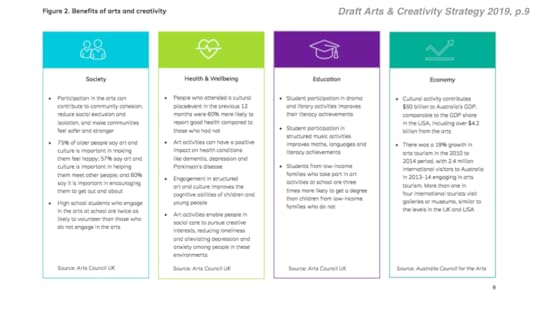
5. Accessible, inclusive grants
I couldn’t even estimate how many writers I’ve mentored or edited over the years – hours and hours of one-on-one sessions talking through their stories, writing habits and needs. One common concern is money. The publishing industry isn’t designed to pay writers for the actual time it takes to create and polish stories. Once the remit of the upper classes, money tends to flow more to the publisher and retailer, not to the writer trying to put food on the table. So…
Where are the grants for low-income earners? I’ve yet to find a grant with income as a consideration. Some businesses hire grant-writers to apply for grants. How can a low-income earner compete? Where are the grants judged irrespective of the provided writing sample’s genre? Certain genres seem to get priority, yet Shakespeare himself wrote in multiple genres: fantasy (A Midsummer Night’s Dream), horror (Hamlet), romance (Romeo & Juliet), historical fiction (the Richards, Henrys), comedy (The Taming of the Shrew), violent thrillers (Titus Andronicus), wartime thrillers (Macbeth), and political drama (Julius Caesar).Where are the grants for students seeking one-on-one mentorship to take their creative passions to the next level, whether that’s awards and/or publication? Our local council offers grants of between $500 and $900 to parents, guardians or students towards the cost of travel to sporting competitions. Could we offer the equivalent to those excelling in literary creativity?
6. Pay writers!
Keep money within the community by seeking consultation with local writers and writing professionals, and paying them for their time and advice. Never ask an artist to do something for free. If you do, we might say ‘yes’ because we’re passionate about what we do, but it will impact our families, finances and ultimately our livelihood.
7. Increase opportunities
Increase the number of writing competitions available for both young writers and adults, so there’s not just a single competition for the whole of the community once per year, but one per suburb every quarter/term, with better prizes, trophies and glory(!).
This idea formed the basis of my ‘Art & Words Project’ – currently open to submissions (see here)! But there’s a lot more we could do too.
What’s next?
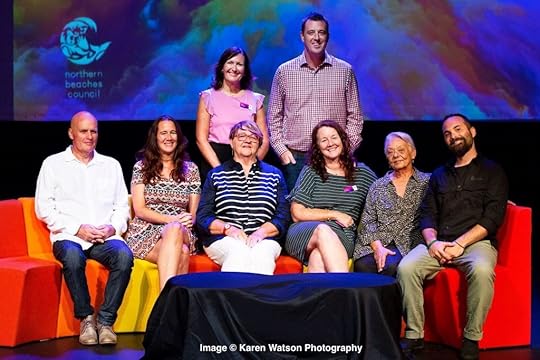
Feel free to copy and paste any of the above ideas into a feedback form or email to your local council (please just include this blog post address as a reference).
Also, let me know if your community faces different challenges, as I might be able to come up with an idea! Or I might have already overcome that particular challenge. We’ll never know unless we communicate. Together, we *can* make the world a better place!
Northern Beaches Council Feedback Form (deadline 17 February 2019):
February 4, 2019
Submissions Now Open!

Last year I was one of a dozen passionate creatives invited to a council think tank about arts and creativity on Sydney’s Northern Beaches. At the end of the night I was inspired, so went home and brainstormed practical ways to increase my community’s participation in the arts, since that was the council’s main goal (read more about the think tank itself in my post about ‘setting a vision for arts & creativity‘). One of my ideas was to create more local opportunities for writers over 18. Young writers have an annual community competition, but there’s nothing for after they leave school.
Of course nothing happens in life unless we make it happen, so a few weeks later I organised meetings with various stakeholders and told them I wanted to edit, organise and publish a community anthology. It would feature stories selected through blind reading, as well as artworks created in response to those stories. Those artworks and stories would then be launched and displayed at the local 2019 Arts Festival. The collaboration would be the first of its kind!
They loved the idea! Financing it was of course another matter. In my free time, after work hours and at weekends, applied for grants and sought private sponsors. I approached 45 different companies and organisations and was knocked back again and again. I cannot even begin to estimate how much time I spent trying to raise the money.
Finally, I found two wonderful companies with an appreciation for the arts – the amazing nationwide real estate One Agency and equally amazing nationwide store OZ Design Furniture, both of whom very kindly agreed to sponsor the project. My local Officeworks were also prepared to pitch in. Yay!
Then… the Northern Beaches Council’s Library Services and Manly Art Gallery & Museum offered to finance the entire project, and help me run the whole thing. Amazing!
So, the anthology is going ahead! In fact, submissions are already open! And the theme is ‘Saltwater’ – which is kinda funny given my last post! I assure you I selected that theme last year, before my harrowing day in the ocean!
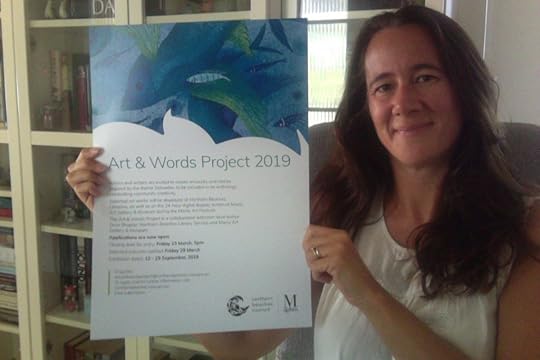
Below is the pitch and entry details – please enter and/or share them far and wide! Anyone with a connection to Sydney’s Northern Beaches can enter.
Saltwater invigorates and sustains us, yet destroys land and takes lives. It surrounds and informs the rhythm of life. Artists and writers are invited to create artworks and stories inspired by the theme Saltwater, to be included in an anthology celebrating community creativity. Successful candidates will receive an artist’s fee and a complimentary copy of the Anthology.

Important dates
Closing date: 5pm Friday 15 March 2019Launch & Exhibition open to the public: Thursday 6 September 2019 at Manly Art Gallery and Museum, 1 West Esplanade & Commonwealth Parade, Manly NSW, as well as displayed at Northern Beaches Libraries Manly Arts Festival Exhibition dates: 6 – 12 September 2019
How to Enter
Entry form for
writer submissions
Entry form for artist
submissions
More Information
For further information contact: ArtAndWordsProject[at]northernbeaches[dot]nsw[dot]gov[dot]au
Continue the Conversation!

I’ll also be appearing at the council’s ‘Continue the conversation – Information Evening’ to talk more about increasing everyone’s participation in the arts. Creativity is good for your health!
Come along to find out more: Glen Street Theatre, Wednesday 6th February, 6-8pm. Register your FREE spot here.
January 24, 2019
When Death Snaps At Our Heels
Life can be over in an instant. Last Tuesday, I almost lost mine. If it wasn’t for a lucky moment or two, I would have smashed into the rocks at Manly’s South Steyne and drowned. Poetically, this was the same day I blogged about loving nature, because it helped me understand places and people. But nature is also mighty and volatile. A part of me still feels as if I actually did drown that day, and the only reason I’m writing this now is because I’m dreaming – of the life I might have lived had I survived.
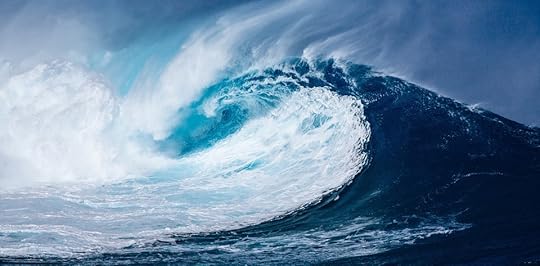
My hubby Bill says the same, that life doesn’t feel real at the moment. It is otherworldly. Surreal. So many of the instructions he shouted at me when I was fighting to stay afloat fell soundlessly into the sea, I guess he also can’t believe I’m still here. “Zena! Don’t you give up! I need you to keep swimming!”
We’d been snorkeling in peaceful conditions with our two children, from a sheltered cove called Shelley Beach, along the coastline towards the open beach at South Manly. We’d already walked the coastline and checked out the ocean – everything had looked good. Even ten minutes beforehand, the sea had me gently bobbing up and down while I floated above schools of silver fish glinting in the sunlight. Beautiful.

But as we approached a rocky point in the land, the sea changed its mind, as its been known to do. It became choppy, swelling, collapsing and foaming around us. Our kids are used to the surf, having grown up on the beach, with Bill often taking them beyond shorebreaks to bodysurf. I play in the ocean myself every weekend in summer, though tend to stay within my depth to boogie board. Big waves scare me. And that’s what happened – the waves grew and, with rocks right alongside us, I didn’t like it.
“Bill?” I called to hubby, doing my best to dive and duck as the swell grew. “I don’t like this. Where do I go?”
He didn’t hear. He was getting our kids coolly and calmly past the breaking waves like he did at the beach. Once there, we could all have easily swum around and past the rocky point, then catch beach-bound waves to shore as planned.
But adrenalin flooded my body and, though I’m usually the calm type, the sudden mid-ocean break had me panicked. Waves began to pummel down on top of me and soon I struggled to catch my breath, swallowing water instead. “Bill! Help!” It became harder and harder to focus on the waves, or time when I should duck under and resurface.
Finally my son heard me calling, and Bill turned to see waves crashing, swamping and pushing my already exhausted body closer to the rocks, now mere metres behind. I’m a good swimmer, whether freshwater, poolside or ocean. But by now I had to drag my limbs from the syrup. Kicking got me nowhere.
“Help!” I yelled to people ambling along the coastal pathway above the rocks. “Help!” I signaled to a helicopter flying overhead.
There was nothing anyone could do. There were no lifeguards nearby, Bill couldn’t reach me without endangering himself and he had to stay with our children, who were bobbing safely beyond the break. “Help!” I told no one.
The worst was yet to come. The tallest wave yet, swelling metres above, smashed into my head, ripped my snorkel and goggles from my face and hurtled me backwards, spinning me around and around.
When I get ‘dumped on’ by a wave at the beach, it usually carries me all the way to the sand. There was no sand behind me, only rocks. I closed my eyes and waited to die.
Instead, after churning forever, I slowed. I peeked out. Everything was white.

Foam?
I relaxed my body, hoping it would float,
and once the swirling stopped altogether, I kicked for what I thought was the
surface.
It was.
“Zena!” Bill yelled, half-angry, half-teary. “Zena! Now! You have to swim now!”
The ocean swells in sets of waves, with lulls between them. He must have seen a lull. This was my chance. Still, he was asking the impossible. I couldn’t swim anymore.
“Zena, please just swim. Please. Duck under
the waves and swim past the break. Pretend you’re in the pool doing laps. Anything,
just swim. You can rest when you reach the children!”
The ocean began to swell again. The children were a good 25 metres away. There was no way I’d make that, not with my body so tired. Still, I wanted them to see me trying, because we should always try. So I ducked under the first set and hauled one arm after another through the glue. Thicker swells grew in the distance.
“Please, Zena. Swim!”
There was no point, but he sounded so sad I
wanted to make him happy. I took a breath and tried again.
“That’s it! Keep going!”
The children got no closer. I was clawing my way through a sludge of water so dense and draining – I couldn’t do it. They were so far away.
“Just get to the children, then you can
rest!”
So I swam, and swam, dragging and panting, and swallowing, until… no more waves broke on top of me. “Am I there?” I couldn’t actually believe it.
“Yes. Float on your back.”
My daughter took off her flippers and gave them to my son, who dived under the surface to push them onto my feet. I could hardly raise them. Bill gave me his goggles. Then he and my son swam ahead to search for a sandy way to shore.
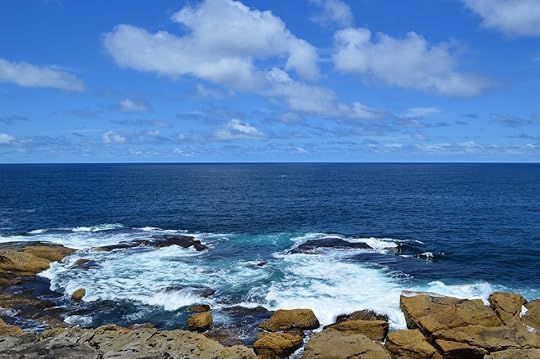
The nearest option was a smaller cove called Fairy Bower, where a set of metal steps led from the coastal pathway into the ocean, surrounded by rocks but with one sandy channel. I followed my son slowly, sometimes on my back, sometimes breaststroke, and finally touched sand.
“Quickly!” Bill yelled, bashing at the
water. About thirty blue-bottle jellyfish floated around the steps, waiting to
sting us. Their stings can be excruciating. He swatted them aside and we
climbed out of the water unscathed. Well, apart from my chest, which clutched
as tight as my hands to the railing and my toes to the metal steps. The
constriction grew so much I feared it a heart attack! So we plodded to the
lifeguards at Manly Beach, hoping it was just a side effect of panic.
They said it was so we went home, though the tightness stayed with me for five hours. Then life continued as normal, albeit dreamlike and otherworldly. Sometimes also sad. As I type this, it feels like a story I’m writing, not real life, and in a way that’s reminded and reassured me that the stories I write, and the danger I offer my characters, is completely and utterly realistic.
Exploring and adventuring can come with risks – you can face death. Last week wasn’t my first time. Whitewater-rafting in Costa Rica – I was thrown off our raft and broke my nose. Climbing over lava tubes in Hawaii – I almost fell through a thin cracking crust and into bright red lava flowing below. Altogether, I’d say I’ve now used up five of my nine lives. A character with that many near-death experiences mightn’t sound believable! So I think I’ll stick to putting my characters in danger and allowing them to face death, but not as much as my own reality.
You can find out what I mean by reading one of my stories! Towards White has a fine set of thrills and adventures, as do many of my short stories. Read some of them over here!
Meanwhile, what about you? When was the last time death snapped at your heels?
January 14, 2019
The Importance of Place

Aussie beach dangers: someone’s inflatable hot dog just blew into my head!
In 2001, I immigrated to Australia for love. I didn’t realise how much I was giving up. The first year was the hardest. I lost friends. I lost family. My qualifications and experience weren’t recognised here. I had a degree with honours and two diplomas but found myself working menial jobs because, as recruiters later admitted, employers of course prioritised Aussies over immigrants. People even spoke a different language! They wore thongs to the bottle-o for a cold one, and only bogans wore budgie-smugglers to the beach. I didn’t understand rips. I’d never heard of AFL or Aussie rules. All kinds of wildlife could kill me…

A diamond python on my bushwalk!
…even tiny spiders in the garden. Birds swooped at me every Spring. When people talked about politics, politicians, sport, television shows, celebrities, indigenous issues, music, books or movies – their conversations isolated me. No, I’d never watched ‘Hey Hey It’s Saturday’! What do you mean, ‘how’s the serenity?’. Some people even seemed to relish the opportunity to make a Brit feel uncomfortable, as if I was responsible for every wrong in history my country had ever done in the world; and none of what it’d ever done right.
 The only place, however, where none of that mattered, was in nature. Trees, bushes, waves and rivers don’t care where you’re from, only that you respect them. I grew up near England’s New Forest, where it’s a delight to get lost and discover a country pub for lunch. Getting lost in the Aussie bush risked death… but exploring its spiky foliage also connected me with the land.
The only place, however, where none of that mattered, was in nature. Trees, bushes, waves and rivers don’t care where you’re from, only that you respect them. I grew up near England’s New Forest, where it’s a delight to get lost and discover a country pub for lunch. Getting lost in the Aussie bush risked death… but exploring its spiky foliage also connected me with the land.
I grew up on the beach, where I’d spend days bathing in sun and floating on ripples. A day under the Aussie sun risked burnt skin and heat stroke… but ditching my lilo and learning to play in its surf also gave me a healthy respect for the waters of my new home.
The green and gold of Australia grounded me.
Here are some pics from my local bushwalk and beach, mere minutes from where I now live:









I used to hold my breath between visits home for rumbles across England’s rolling countrysides. Now, thanks to landscapes like these, I get to breathe every weekend (as long as it’s not raining!). I still struggle when conversations turn cultural; but I’ve found a way to make money without employment, I’ve learnt the language, and a bushwalk or boogie board at the beach soon comforts me and helps me understand my new home – its vastness and isolation, its warmth and beauty, its dangers and life.
This importance of ‘place’ for me is the same when I travel to other countries. It’s not the conurbations, but the geography that tells me the land’s story and shows me the rhythm of its people.

“a fascinating Icelandic setting”, “a starkly beautiful landscape”, “The world building was perfection.”
More than that, immigrating has informed the way I write, not because I write about the experience, but because I value developing a ‘sense of place’ in the stories I write. Whether a story’s set in a world we already know or a created fantasy world, a strong ‘sense of place’ can anchor readers, just as it anchors me to mine. So I spend time developing details, striking comparisons, and bringing the land alive for readers. I’m glad it’s one of the compliments I receive when readers enjoy my stories.
As for Australia, I’ve crossed the tipping point now between leaving somewhere I loved and belonging somewhere new. It’s not the crickets or wood pigeons but the cicadas and kookaburra that call me home. I even have an Aussie twang. This place of green and gold has won my heart, step by step through the rubbery grass trees and foamy surf.
What about you? What anchors you to your home, wins you over and makes you feel like you belong – whether you grew up there or not?
December 26, 2018
A Year in the Life…
Every year I work at building my career as a writer. There’s no grand plan, just a desire to reach out to readers where possible, share my experiences and gain new ones. My main method is to ‘say yes to everything’ and see how it goes.
Which is why 2018 started with an author talk at the Booklovers Club and ended with one too! Back in January I was busy promoting my novel Towards White and got to talk about it to this bunch of lovely people:
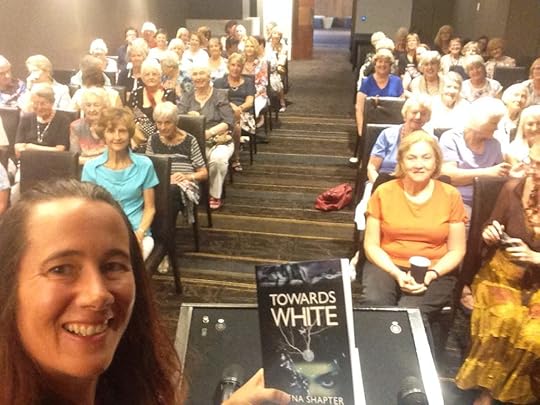
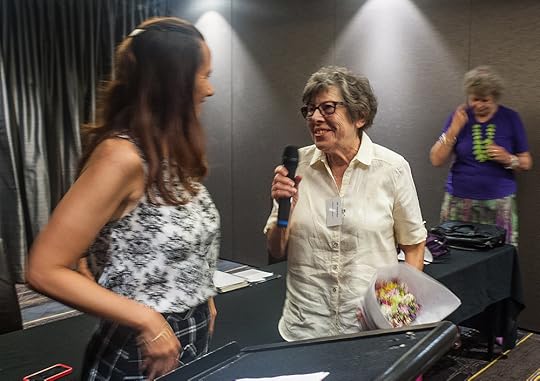
So many readers have bought Towards White with the proviso ‘I don’t usually read sci fi, but it’s so interesting I’ll give it a go’, and then they’ve been amazed by how much they enjoyed it, which of course makes my heart sing because it is a cross-genre book designed to appeal to a variety of readers, particularly fans of thrillers, mysteries or sci fi. I’ve had readers message me throughout 2018 saying they cried at the end, that they couldn’t put it down, or that it made them miss their bus stop / stay up too late / get behind on their work. They’ve sent me pics of the book in their gardens, bedrooms – even while camping!
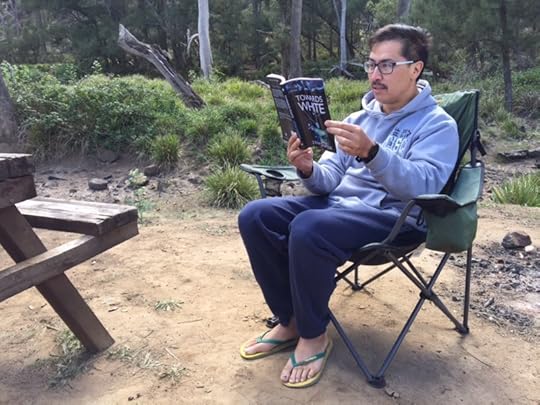 NSW South Coast
NSW South Coast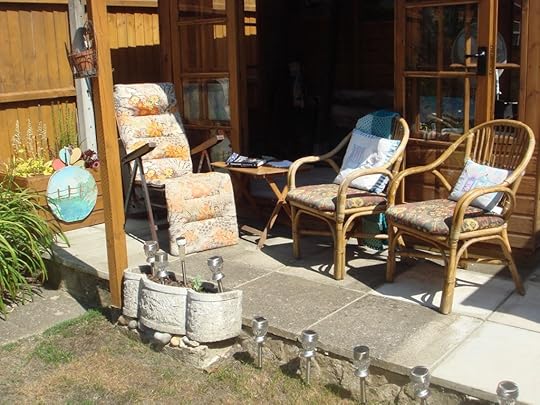 England
England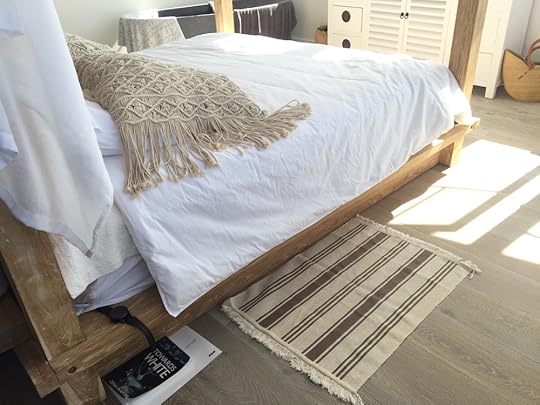 Sydney
SydneyI did a lot of interviews when the book first came out last October, but the fun continued this year too. I talked about it to listeners of The Book Podcast, when I was interviewed in January…

…to listeners of Radio Northern Beaches when I was interviewed in February…
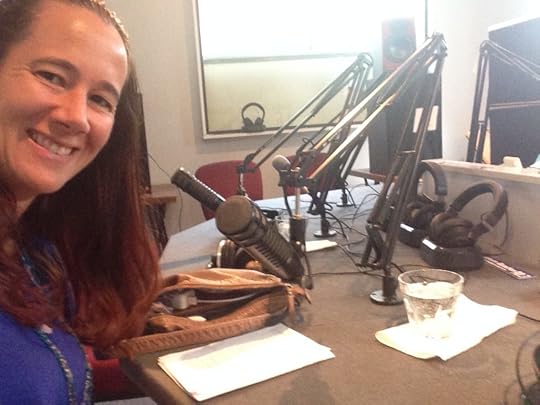
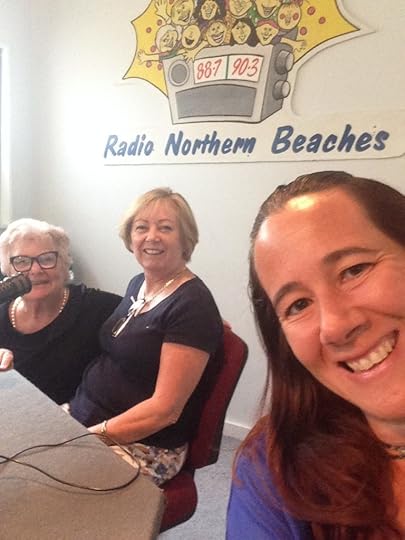
…and to the Sydney Mechanics School of Arts through this YouTube clip in March:
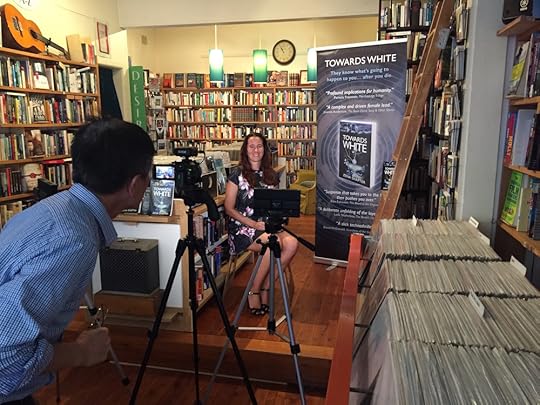 Thank you Phil Jang!
Thank you Phil Jang!To balance out all the fun and glory, I blogged about writer resilience in April, sharing a ‘writer resilience’ soundtrack I created in YouTube to lift fellow artists on otherwise down days.

June brought me no down days, however, as I had two book launches! The first was for an anthology I edited, ‘A Noise on an Island’, a fascinating project where writers had to create a story within a strict set of parameters. The premise involved a strange noise in an old abandoned quarry on a tropical island off the coast of Queensland. Writers could create any character they liked set on that island. The second launch was to raise money for The Kids’ Cancer Project with a co-authored children’s book ‘The Guitar Wizard’, which had won the 2017 WABIAD Award for Best Book in the Open Category. It’s a story about an entire universe in peril, a teenage girl who loves music and her pet lion!
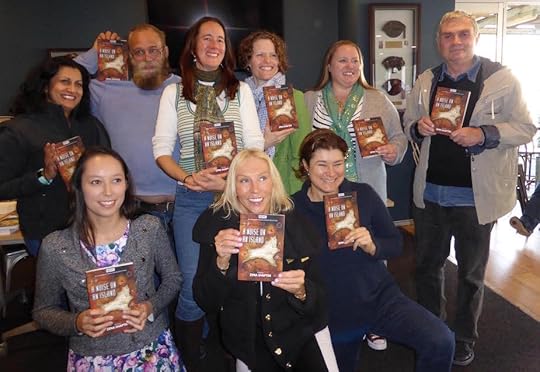
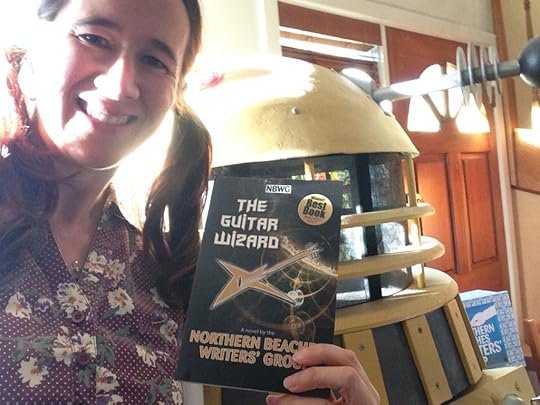
In June I also got to meet a heap of special friends at Supanova in Sydney!
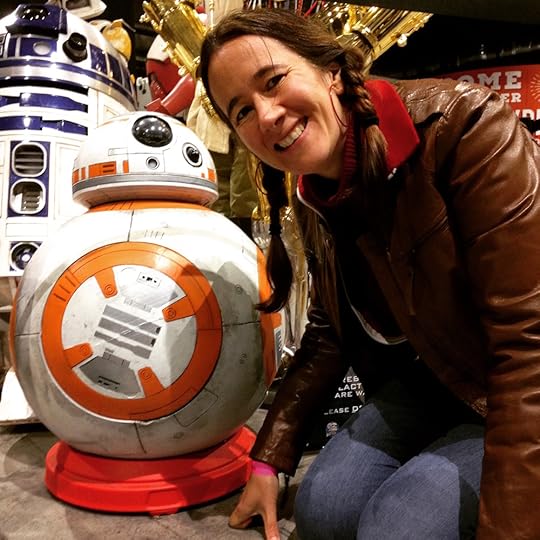
I taught a lot this year too, helping both adults and young readers with their creative writing. All this in fact:
Author Talk or Luncheon – 1-2 hr talk
Creative Writing Skills Bootcamp – 5-6 hr workshop
Make Talk Matter: Dialogue Masterclass – 2-3hr workshop
Writing Science Fiction & Fantasy – 1 x 6.5 hr or 2 x 3 hr workshops
The Year Your Book Gets Written – 11 x 2 hr workshops + 10 hrs mentoring
Turning Life Into Fiction – 1 x 6 hr or 2 x 3 hr workshops
Write Your Life Story – 1 x 6.5 hr or 2 x 3 hr workshops
How to Self-Publish a Book – 4 hr seminar
Blogging for Connection – 3 hr seminar
Writing Technique Development Day – 1 day class for writers aged 9-18
Upper Primary Focus – 2-3 hr workshop for writers aged 8-12
High School Focus – 3 hr workshop for writers aged 12-18
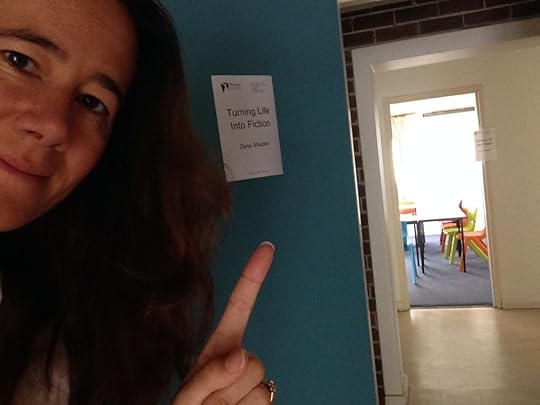
July was particularly busy, helping young writers prepare for the Northern Beaches Young Writers’ Competition:
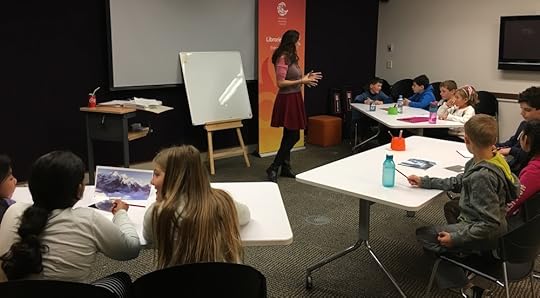
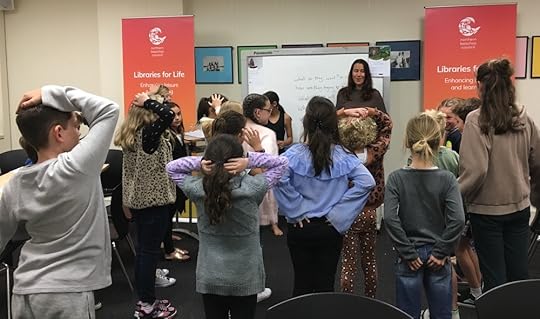
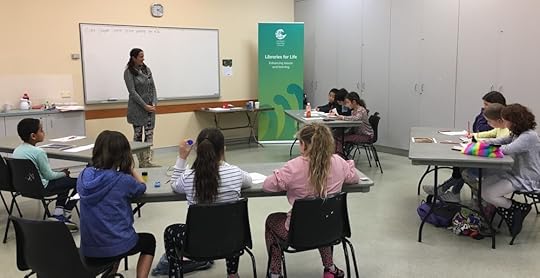
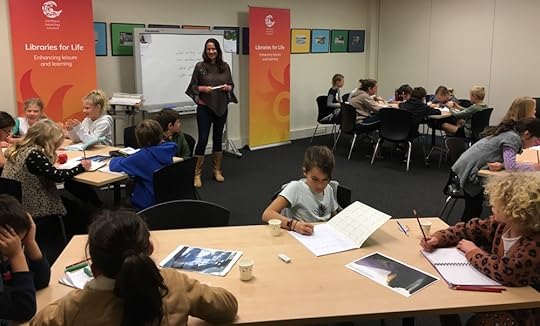
Then in August, I judged and presented my report for the Mosman Literary Awards:
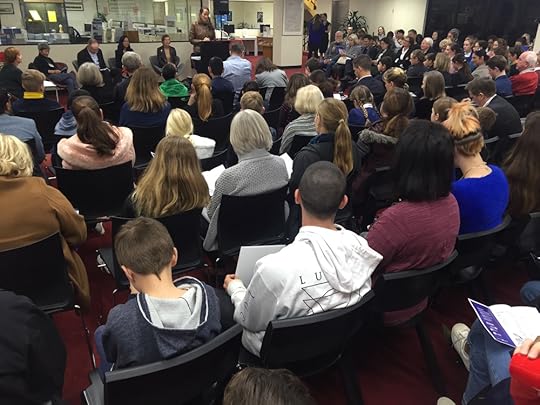
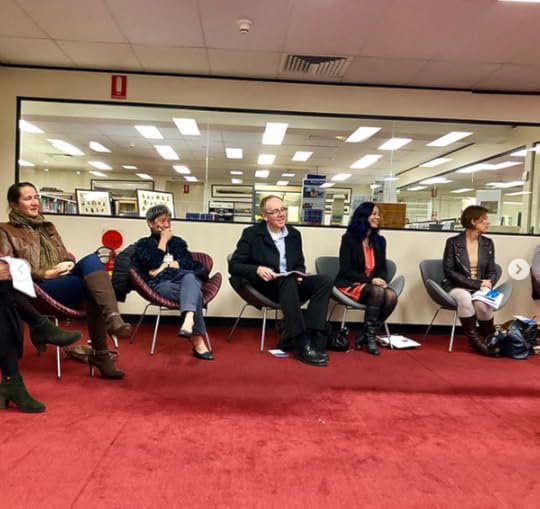
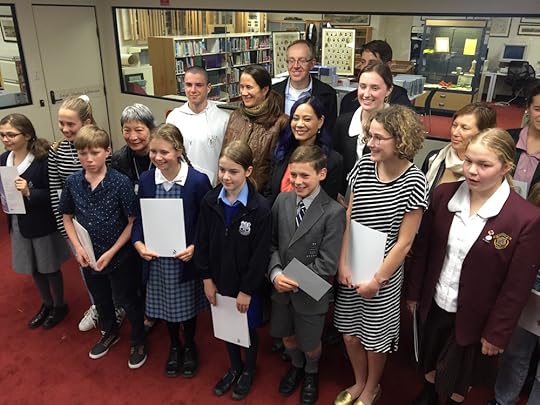
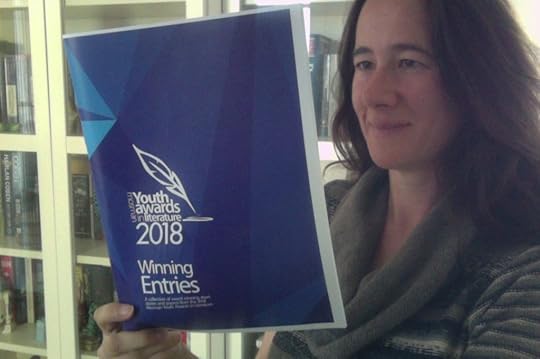
In October I lead a writers’ retreat on the Central Coast.
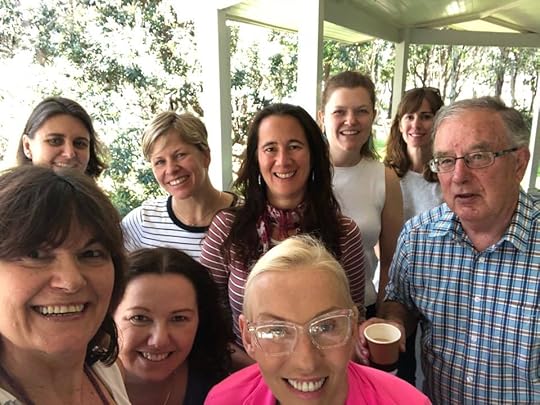
I also blogged advice for writers about various literary techniques – namely filter words, point-of-view and what I term ‘over blight’.
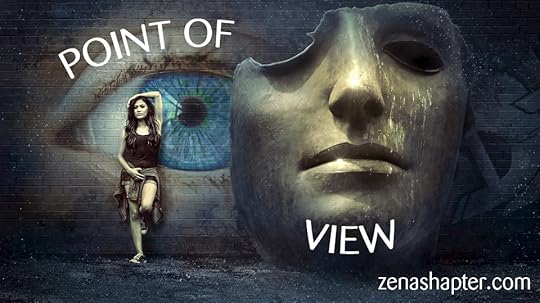
On top of all that, I also had five short stories accepted for publication this year, woo hoo!
“Shy”– coming soon, Manawaker Studio’s Flash Fiction Podcast.
“Diamonds in the Sea”– coming soon, The Patchwork Raven.
“The Polite Watchman”– coming soon, The Martian Magazine.
“The Call of the Gypsy Fetcher”– coming March 2019, WhimsyCon Anthology.
“The Final Squeeze”– published (AntipodeanSF
Magazine, Issue 245, December 2018).
Finally, December saw me at the Booklovers Club again, this time to talk about Collaborative Writing. My head swelled with all the praise my fellow collaborative writers gave me for being a good editor-in-chief! I thought them equally marvellous for their ingenuity and team spirit. Collaborative writing’s all about teamwork!
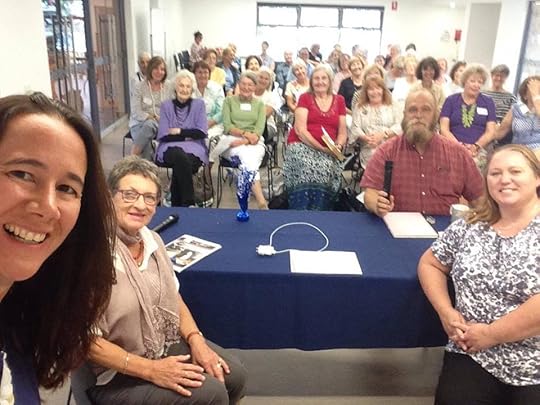
Next up? More of the same, of course! I hope to use this recap to inspire me in 2019 to keep juggling my creative support business, family, and actual writing, so I can fit in extras like all of the above, which I love so much. Hopefully it inspires other writers and readers out there too! Happy New Year, everyone!
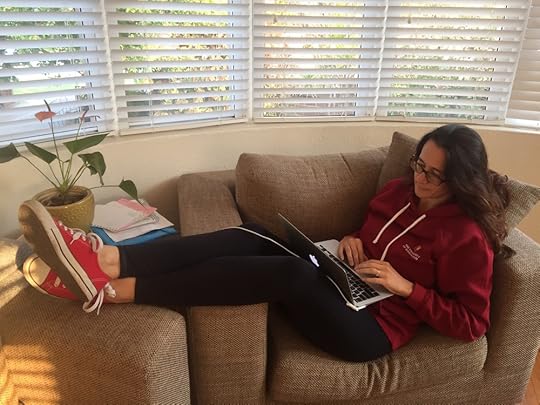 Caught in the act by Hubbie. I love writing!
Caught in the act by Hubbie. I love writing!

